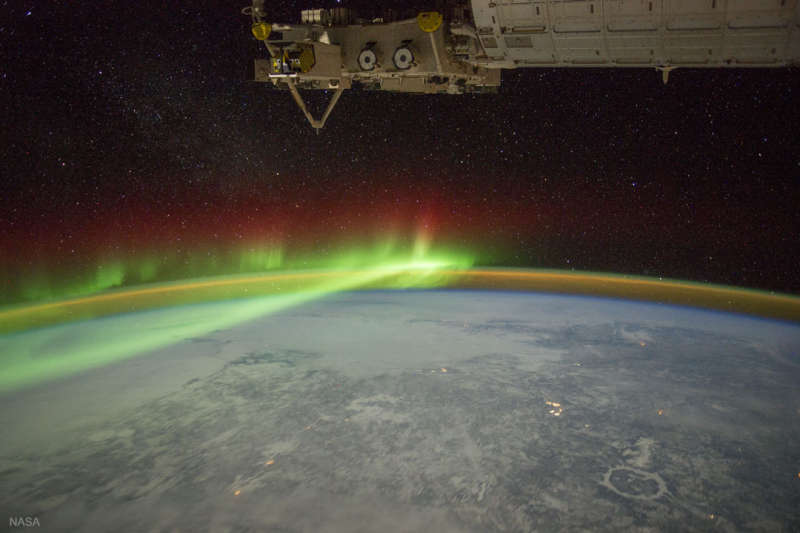
|
Credit & Copyright: NASA
Explanation:
How many of these can you find in today's featured photograph: an aurora, airglow,
one of the oldest impact craters on the Earth, snow and ice, stars, city lights,
and part of the International Space Station?
Most of these can be identified by their distinctive colors.
The aurora
here appears
green
at the bottom, red at the top,
and is visible across the left of image.
Airglow appears orange and can be seen hovering over the
curve of the Earth.
The circular Manicouagan Crater in
Canada, about 100 kilometers across
and 200 million years old, is visible toward the lower right and is covered in white
snow and ice.
Stars,
light in color, dot the
dark background of space.
City lights appear a bright yellow and dot the landscape.
Finally, across the top, part of the
International Space Station (ISS) appears mostly tan.
The
featured image was taken from the
ISS in 2012.
|
January February March April May June July August September October November December |
| ||||||||||||||||||||||||||||||||||||||||||||||||
NASA Web Site Statements, Warnings, and Disclaimers
NASA Official: Jay Norris. Specific rights apply.
A service of: LHEA at NASA / GSFC
& Michigan Tech. U.
Based on Astronomy Picture
Of the Day
Publications with keywords: aurora - Manicouagan crater
Publications with words: aurora - Manicouagan crater
See also:
- APOD: 2025 January 7 Á A New Years Aurora and SAR Arc
- APOD: 2024 December 8 Á Aurora around Saturns North Pole
- APOD: 2024 October 16 Á Colorful Aurora over New Zealand
- APOD: 2024 October 13 Á Aurora Timelapse Over Italian Alps
- Northern Lights, West Virginia
- Aurora Australis and the International Space Station
- APOD: 2024 June 26 Á Timelapse: Aurora, SAR, and the Milky Way
